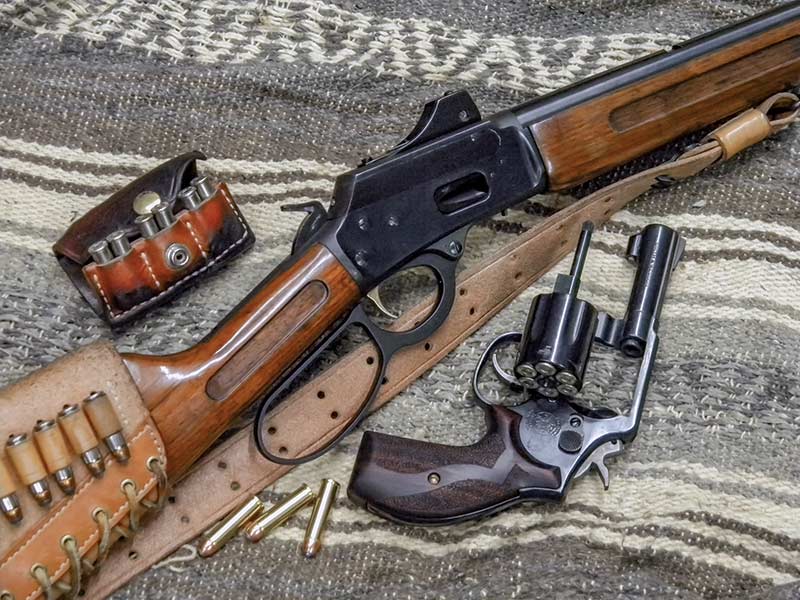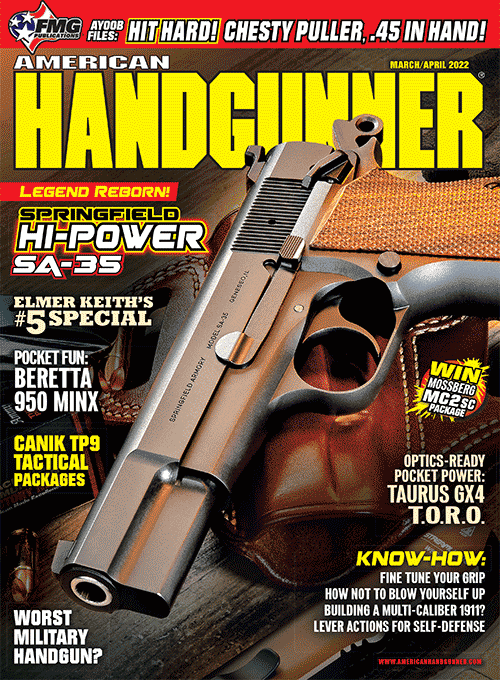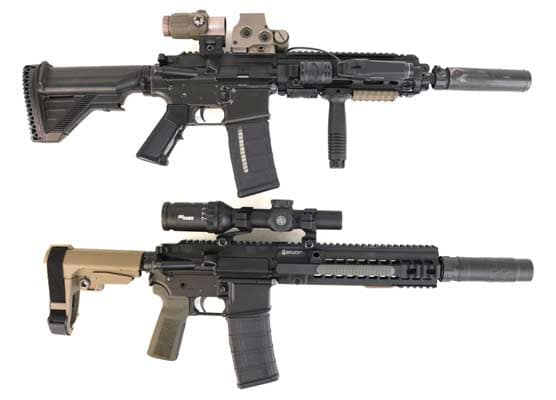Lever Actions for Self-Defense
Choosing a handgun for self-defense is a serious decision. There are different platforms to consider. “Fit” is critical. Is the pistol’s size and manual of arms appropriate and proportional to your hand size and strength? Willingness to train and practice is a factor; some handguns are more complicated than others. Often, it turns out a revolver is the ideal handgun, but that’s only half of the equation. Being fully prepared includes selecting a companion long gun. The more compatible the pistol and carbine/rifle are, the more efficient your response to danger. Turns out, “old” revolvers work well with “old” lever action rifles.
Long Live The Wheelgun!
Revolvers are ideal for self-defense. They come in a variety of sizes, shapes and calibers — more today than ever. Several, like the .357 Magnum and the .44s are more effective than the common semi-auto rounds. Revolvers are easy to conceal and carry. Wheel guns don’t require resistance against recoil to function. They can be fired from unusual positions — common in fights. When physical force is applied against the barrel, like against the threat’s ribs, they still work. A well-maintained revolver is more reliable in a fight than a semi-auto. Once the “mystery” of the revolver’s operation is revealed, they’re great, reliable weapons.
Revolver Companions
The “Henry” lever action rifle was produced in 1860. The simple, rugged design hasn’t evolved much since then, but still has plenty to offer today, especially for self-defense. Lever actions also come in a variety of calibers. “Commonality,” the ability to shoot one caliber with pistol and rifle, was a major attraction when “riding the river” in the Old West.
Sharing this feature is just as desirable today. I normally carry revolvers and the 1895 Marlin .357 Magnum lever action is a perfect companion piece. I chopped down my Marlin’s barrel and stock. It’s only 32″ long (4″ shorter than an AR carbine) and six lbs. loaded with extra rounds on the stock. They’ll both fire Magnums and .38 Specials. The longer barrel of the rifle adds velocity, and the increased sight radius — the distance between front and rear sight — improves accuracy. A variety of companies are producing modern “tactical” lever guns with components like synthetic furniture and M-LOK aluminum handguards.
Optimizing Classic Designs
Both handguns and long guns require the use of modern, “defensive” ammunition. Full metal jacketed “ball” rounds often over-penetrate, failing to produce the desired results. Defensive ammunition is designed to expand and dump all its energy into the body. The ballistic advantages are great — especially considering the advances in design and construction over the past decade.
For both revolver and lever action, fit is important. With revolvers, it’s stocks. For long guns it’s length-of-pull, the distance between butt of the stock and trigger. Sights that work for you, under all lighting conditions, are necessary for pistol and lever action. Even red dots are an option, especially with the rifle. Holsters for the handgun are mandatory. The sling is the rifle’s “holster.” Adjusted properly, a simple, two-point sling with a quick disconnect does everything needed.
Extras
If forced to fire, you’ll probably only expend a few rounds — three or four shots are the numbers seen most often in defensive situations — but be prepared for the “unexpected.” Always carry extra ammunition. I like the 3×2 or “pick” pouches. You can load individual rounds as needed with additional rounds on the rifle’s stock. Commonality between pistol, rifle and back-up weapon — and don’t forget the “snubbie” on your ankle — is a beautiful thing.
Like it or not, “legal” is an aspect to consider. Semi-auto versions of military style weapons and certain semi-auto pistols are illegal in some parts of the U.S. In other places they’re legal but not “socially acceptable.” “Grandpa’s” revolver or lever gun won’t attract undue attention, they’re “more legal” across the States and, if the threat forces you to fire, the “optics” will be much more acceptable. Yes, it’s sad, but today, actions and gear will be examined with extreme prejudice.
Remember, hardware is backed up with training and practice. Revolvers and lever guns are not complicated to operate efficiently, but that doesn’t mean it’s easy. Training introduces the techniques to safely and efficiently use your firearms, and the tactics of defense. Practice (repetition) is when the real learning occurs. Luckily, dry practice is simple with both DA revolvers and lever guns.
Wheel guns and lever actions aren’t for everyone. While they’re considered “easy” to use, employing them properly, safely and efficiently against a violent attack requires more dedication than most semi-autos. Regardless of the combination of pistol and long gun you select, strive for compatibility.
Efficiency, which is always effective, is the goal.








